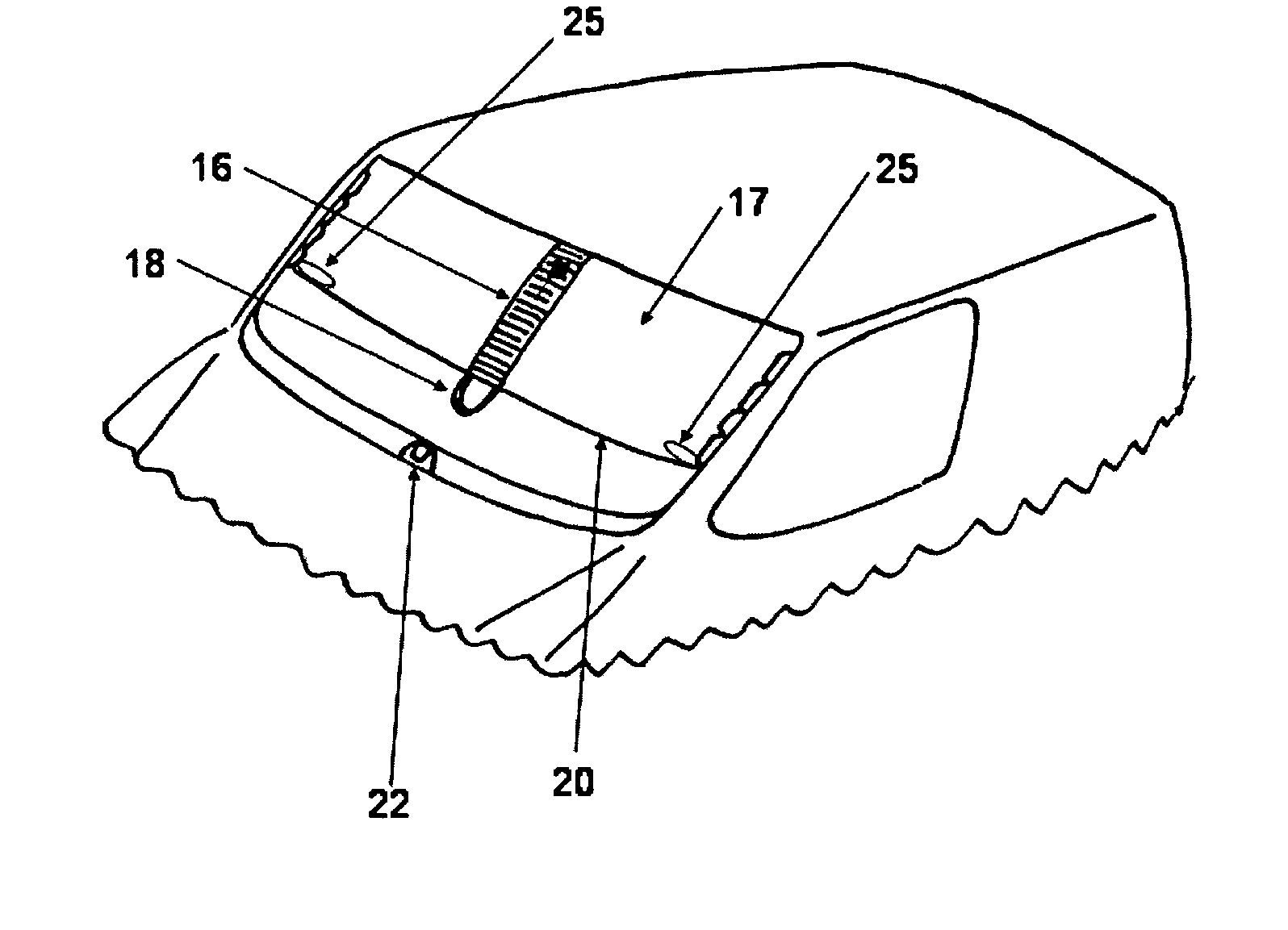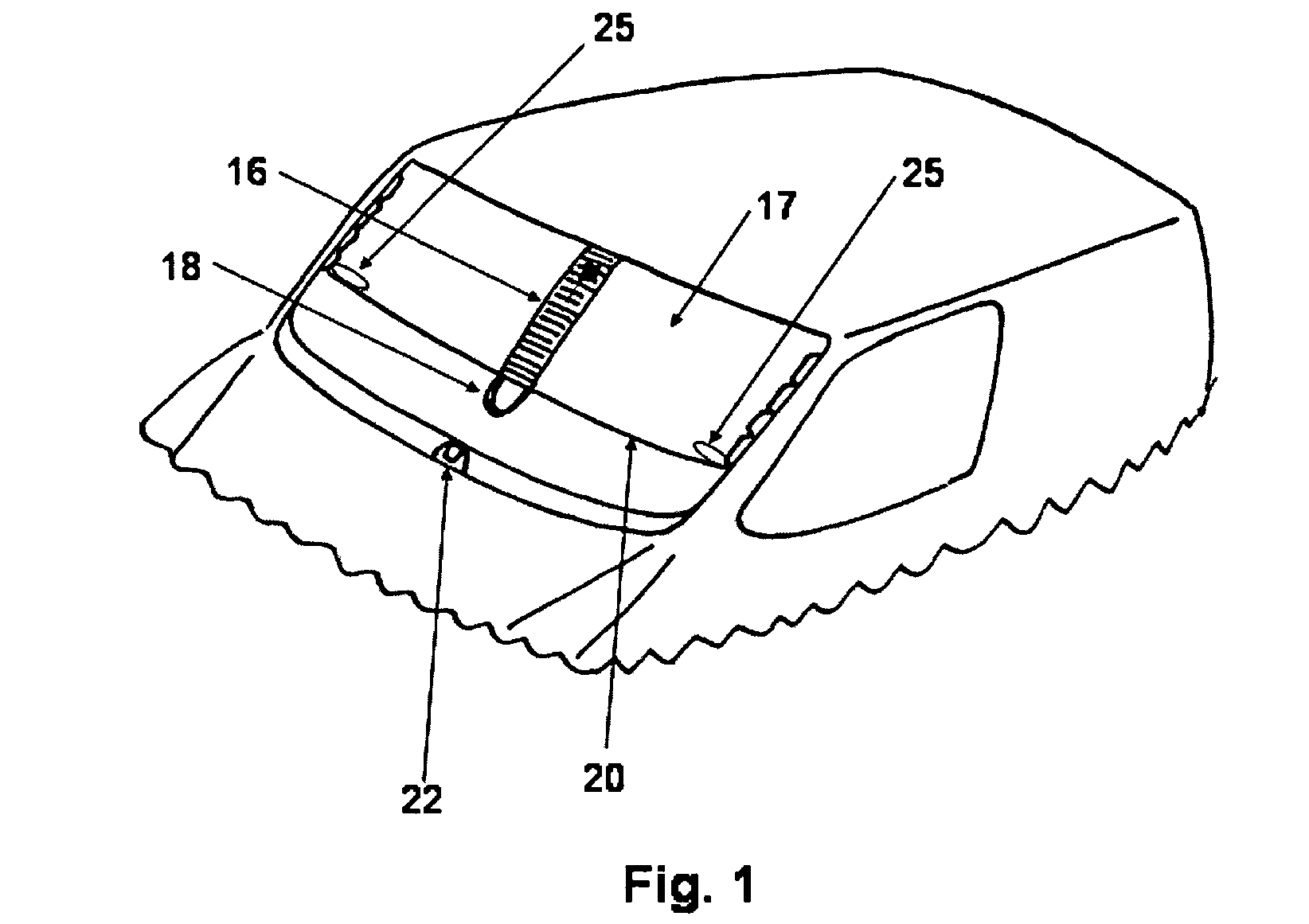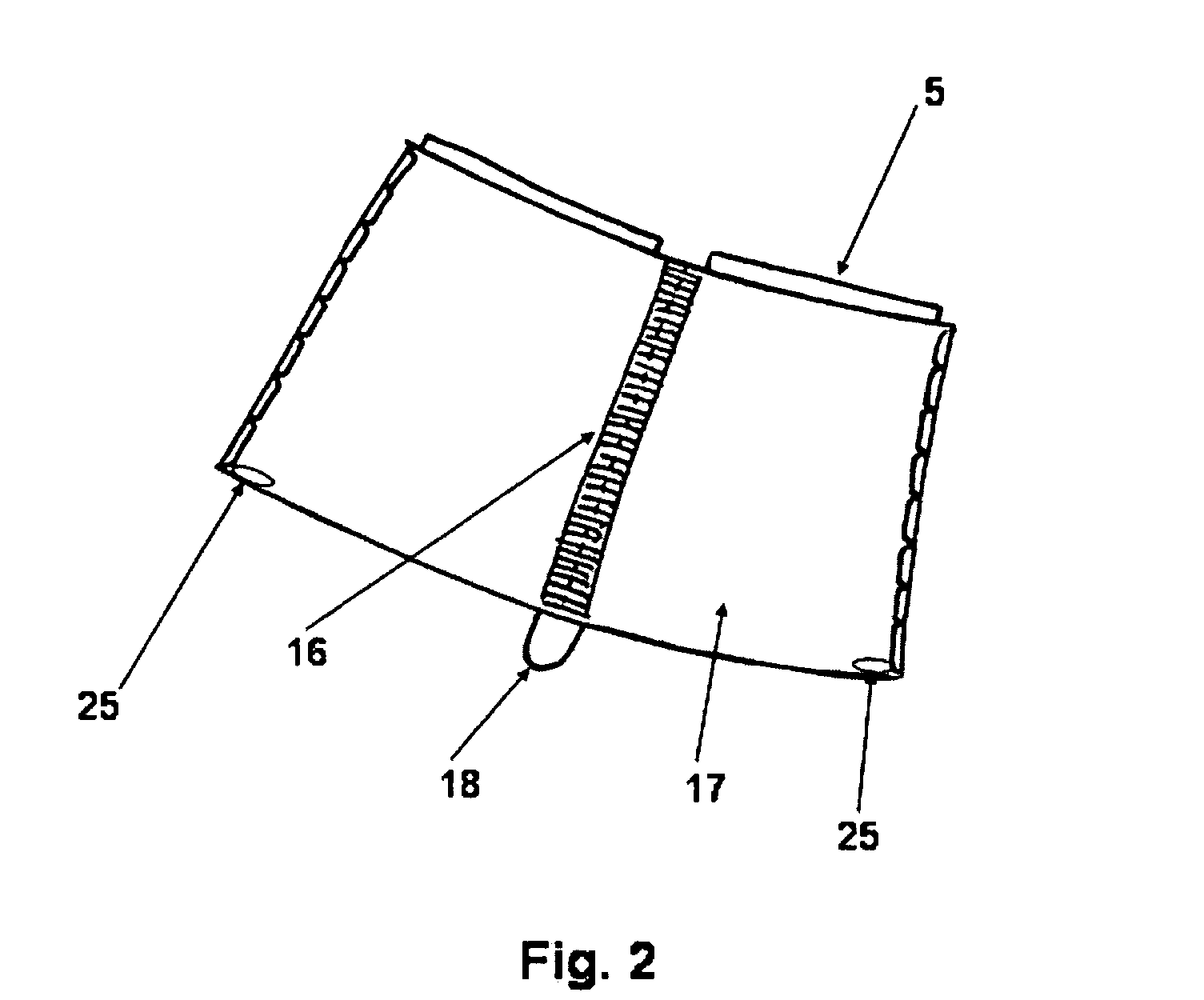Secondly, there is no solution from auto makers to prevent damage to the auto interior caused during the day when automobiles are parked on streets or in uncovered parking areas from
exposure to sun.
Further, the two sun visors that are typically provided by the manufacturer of an automobile are not aesthetic items, in that they break the smooth form of the roof liner and the interior.
Also, visors currently in the market are not designed to protect the interior of their automobiles from the heat and glare from sun when they are parked most of the day in uncovered parking lots or on streets in residential areas.
These after-market products are quite clumsy, and require a discipline of the car operator to faithfully install the apparatus after each driving session, and remove the same prior to again driving.
These requirements are often too onerous for the typical driver, and the device ends up not being used after a short period of time, or only used sporadically.
In summary, existing pair of visors have several disadvantages: they do not cover the entire width of the windshield; they are not designed to and do not protect the interior of the car from
sun damage and heat, and thus consumers have to pay extra to protect the interior of their automobiles; they are not aesthetically pleasing; and they haven't seen any substantial technological improvement since their invention, unlike many other features of the automobile.
The device of Reina Jr. cannot be deployed as a
visor when an automobile is in drive mode.
Further, it may not be deployable in an automobile that has a sun / moon roof as there would not be sufficient room for the retractable panel.
U.S. Pat. No. 5,947,544 to Hubeshi describes a “window only” sun
visor and doesn't offer the dual benefits of a full cover device that also functions as a visor.
U.S. Pat. No. 5,409,284 to Mahler discloses an extendable sun visor that covers the windshield all the way down but leaves a gap in between the two visors and doesn't effectively cover the entire windshield nor provide the full benefits like
cutting off the heat and glare that damage an automobile interior.
Further, it is not feasible to deploy Mahler's device on the rear windshield.
Still further, none of the aforementioned patents disclose
full coverage of windshields for protecting the interior of the automobile from
sun damage and / or providing security to articles contained within the automobile.
Moore's device does not provide the ability to function as a visor while an automobile is in drive mode and doesn't account for the sun roof which is almost a standard feature in most luxury cars that would obstruct the installation of the storage recesses.
Additionally, the screens disclosed are provided in addition to the automobile visors and are not a replacement thereof, and hence require an additional cost to an auto manufacturer.
The
assembly is deployed only when the vehicle is parked and can't offer visor position while an automobile is in drive mode.
Additionally, the existing visors of the automobile are required for the visor function, and hence an added cost to automakers is presented, which is a disincentive.
U.S. Pat. No. 6,776,211 to Schlecht et al describes a retractable windshield cover with stretchable / expandable material but doesn't offer the visor function for automobiles in drive mode nor interlocks.
U.S. Pat. No. 6,536,829 to Schlecht et al. does not appear to address
usability with a vehicle that has a sun / moon roof, nor does it address safety requirements for the
safe operation of automatic shade devices in a vehicle, and therefore does not provide any
safety interlock, nor does it provide any
interlock whatsoever, such as one that acts as theft deterrent.
They do not address any of the functionality of providing a
dual function sun screen for a front windshield of an automobile.
U.S. Pat. No. 4,836,599 to Svensson is a two part (pair of visors) device with increased cover of the top portion of the windshield, but doesn't offer the full windshield cover functionality nor is it a powered solution.
U.S. Pat. No. 4,958,879 to Gillum discloses a portable compact sun visor that could be placed over the
rear view mirror post to cover the gap between the existing pair of visors to block off the sun entering from around the mirror, but lacks a full windshield coverage capability.
It does not replace the existing visors, nor does it provide full windshield cover.
This doe not provide full windshield cover, not is it power driven.
U.S. Pat. No. 5,192,110 to Mykytiuk describes a stowable visor with vanity mirror and doesn't provide the full windshield cover, nor is it power driven.
U.S. Pat. No. 5,328,227 to Pax Jr. et al, describes a visor only solution which is pivotable and extendable but does not provide full windshield cover.
It is a power tinted two plastic screen solution that leaves a gap in the middle and doesn't provide security or obstruct interior view.
U.S. Pat. No. 5,445,427 to Vandagriff discloses a sun visor attachment adapted to be secured to a preexisting sun visor, but does not offer a windshield cover solution nor a power deployment feature.
It is not a windshield cover solution nor is it power deployable.
This does not offer a windshield cover solution nor heat obstruction or privacy barrier when an automobile is parked in uncovered parking areas.
They do not offer the dual benefit of functioning integrally as both sun visors and sun barrier apparatus.
WO / 2005 / 090107 to Yamada describes a sun visor solution only and doesn't provide the windshield cover option.
WO / 2005 / 030512 to Araga and Kosokawa is a pair concept improvising over the current pair of visors concept, and does not provide a power option nor a windshield cover option.
The solution is expensive because of the requirements for components such as digital cameras, electro-chrome material, microcontrollers, etc., for the driver- and passenger-side visors.
Further, when an automobile is parked and engine is
shut down, the visor material, the digital cameras and the microcontrollers would all be
shut down, thereby disabling the windshield shading function of this device, and therefore not providing security to the interior components of the car.
WO / 2001 / 034418 to Truitt also describes a visor extension built on the current visor apparatus, and does not provide full windshield cover.
 Login to View More
Login to View More  Login to View More
Login to View More 


